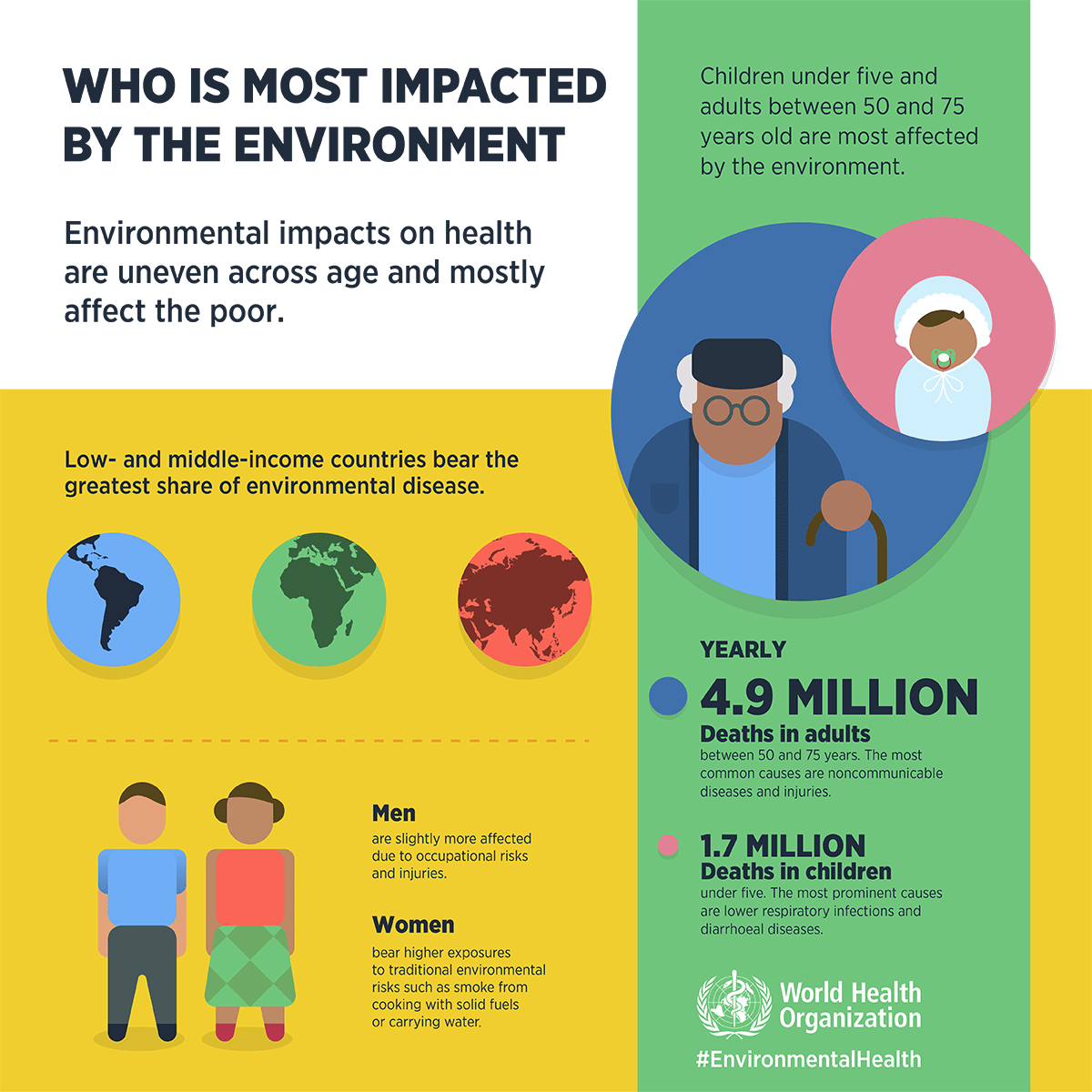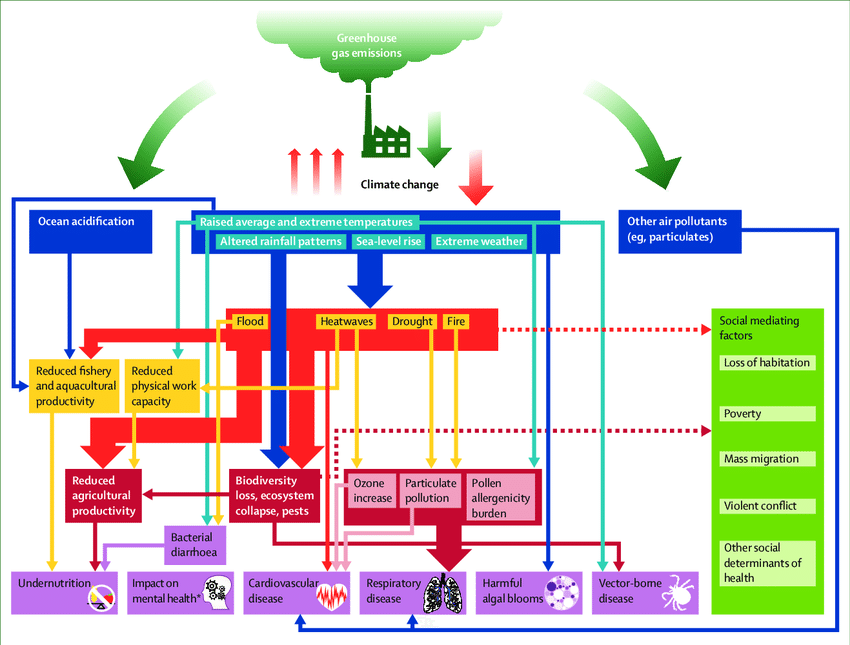Topic outline
-
-
How heavy is the burden of disease?
So, exactly how much of the burden of disease across the world can be attributed to these environmental risks?
The answer depends on a range of factors, such as the type of disease, how vulnerable the local population is, the genetics of the population, and the socioeconomic context.
What we do know is that nearly two thirds of all global deaths which can be attributed to factors in the environment are from non-communicable diseases. Cancers, depression, cardiovascular diseases, chronic obstructive pulmonary disease, asthma and musculoskeletal diseases can all be either caused or made worse by environmental factors (Prüss-Üstün et. al., 2016).
For example, one third of cardiovascular diseases are the result of environmental factors such as household and ambient air pollution, second-hand tobacco smoke, and chemicals.
Below you can see a graph which illustrates the burden of disease from environmental factors. The information for this graph was sourced from the WHO document, 'Preventing disease through healthy environments' (World Health Organization 2016).
Click on the blue hotspots on each element of the graph to see more information about the specific factors which impact on each disease.
The percentages on the x axis represent the cases which are attributable to the environmental factors on the y axis.
A specific example
Let’s look at a specific example of a non-communicable disease which is very common in our society: heart disease.
How do environmental factors contribute to heart disease?
The following presentation will answer this question.
Work through the presentation by using the blue navigation bar at the bottom.
(Note that the acronym DALY stands for disability-adjusted life year. It's a way of measuring disease burden by looking at the number of years lost due to ill-health, disability or early death.)
(All of the images below are sourced from https://www.shutterstock.com/home.)
Who is impacted?
As we said earlier, the estimates of exactly how much burden of disease is attributable to environmental factors vary, depending on the type of disease, vulnerability, genetics, population groups, and socioeconomic aspects.
Children under five are one of the largest group of sufferers, especially those living in developing countries. A large proportion of death and disease in children under age five is still linked to living in households without access to basic service, such as safe water and basic sanitation, or houses that are smoky because of the unclean fuels being used for cooking or unclean technologies.
You can see a summary of whose health is impacted most by the environment in the image below (taken from http://www.who.int/phe/infographics/environmental-impacts-on-health/en/).

We've already covered the social determinants of health, and you've looked at how social determinants of health contribute to people living and growing in areas of poor environmental health.
As you can see, the environmental and social determinants of health are closely intertwined. These determinants are closely linked to and mediate exposure to environmental risk factors such as working conditions, housing, water and sanitation or healthy lifestyles.
Health and climate change
Increasing concentrations of greenhouse gases (carbon dioxide, methane, nitrous oxide and halocarbons) in the Earth's atmosphere are contributing to climate change, and this has an impact on human health.
These gases are produced by the process of burning fossil fuel for electricity generation, as well as by the transport, mining, agricultural and land management sectors. They increase the amount of heat trapped in the lower atmosphere, and cause increases in air and sea temperatures.
Climate change produces changes in rainfall patterns, and increases the number and severity of extreme weather events such as cyclones, floods, heatwaves, droughts and bushfires. The higher temperatures melt ice, which expands water volume and causes sea levels to rise, reducing land areas.
Increasing carbon dioxide levels also contribute to ocean acidification, which impacts on marine ecosystems.
You can see the impact of climate change summarised in the diagram below (Lancet Commission 2015).

As you can see, climate change has both direct and indirect effects effects on health and wellbeing, and there are complex interactions between both causes and effects. Social dynamics also affect the health risks.
Storms, droughts, floods and heatwaves have direct effects of climate change, and produce indirect effects, such as lower water quality, land use change, ecological change and air pollution.
The direct effects of climage change, and the indirect effects, and social dynamics (age, gender, health status, SES, social capital, public health infrastructure, mobility status and conflict status) all have an impact on health.
For example, climate change has impacts on ecological processes (such as a reduction in biodiversity and changes in disease vectors). These type of impacts can increase health risks. However, risks can also be reduced, by social responses and adaptive actions.
Learning activity 4.4: Environmental factors are a burden
This activity will help you to appreciate the impact of environmental factors on health.
There are three screens in the activity, with a question on each screen.
Answer the questions on each screen, and then click on the blue 'Check' button to see if you're correct. If you got the answer wrong, you can try again or see the correct solution. Then move on to the next screen.
Your answers won't be seen by the course staff or by other students, but if you keep getting them wrong, look back over the content for this section.
-